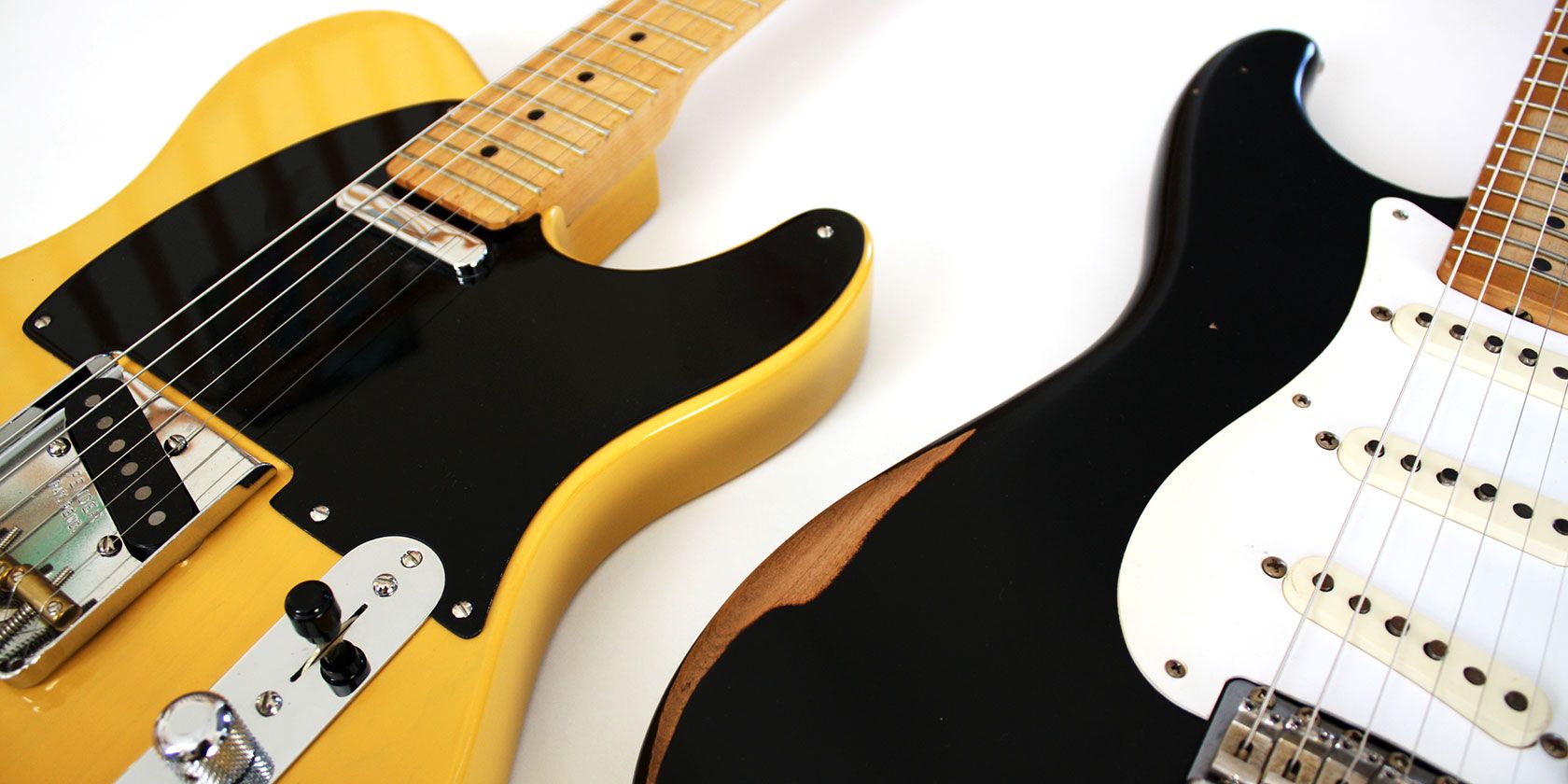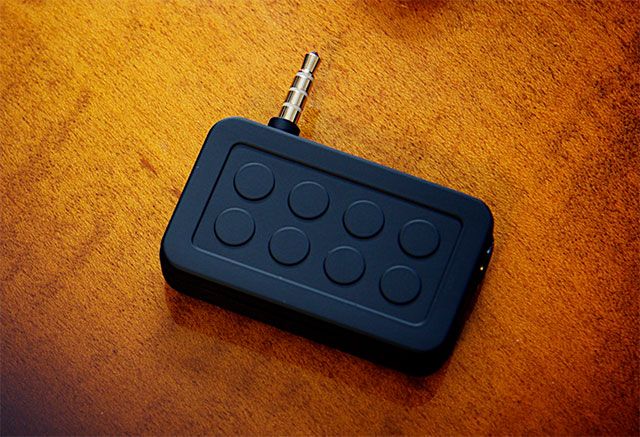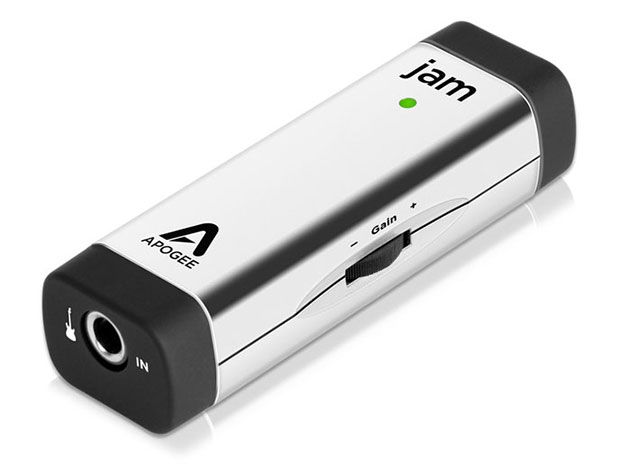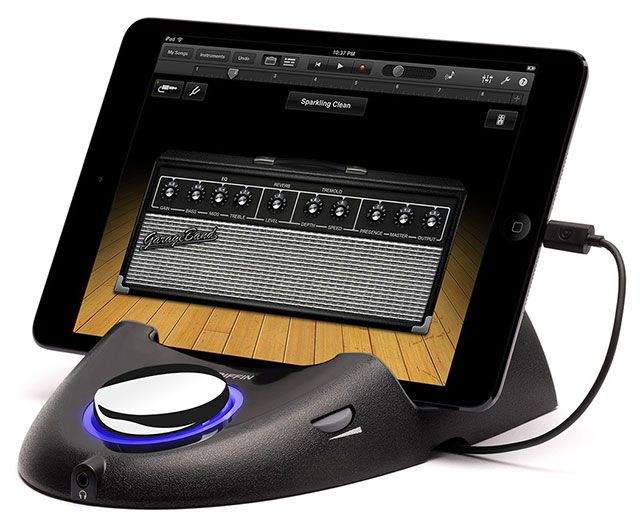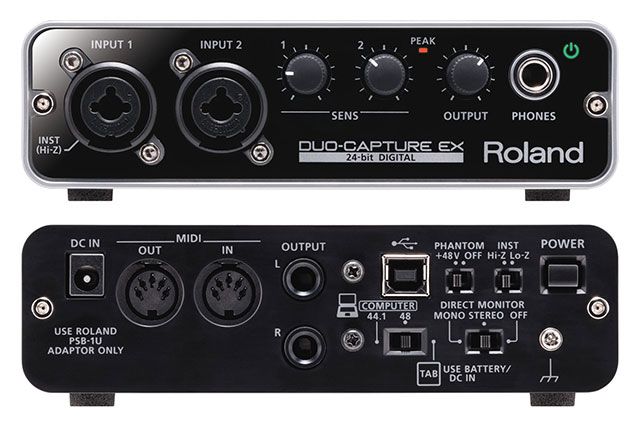You can plug your guitar into your iPad or iPhone to record, process or simply capture inspiration as it comes to you, wherever you are. But in order to do this, you'll need to invest in a guitar interface – and there are plenty to choose from.
As ever, your expectations and budget will dictate the right tool for the job. There are interfaces for jamming that start at $20, to fully-fledged mobile studio-quality inputs that cost more than your iPad, and everything in between.
Budget Interfaces
JamUp Plug [No Longer Available]
The first cheap and cheerful option on the list comes from Positive Grid, who you probably know for their JamUp XT (free, Pro $9.99) apps for processing guitar effects. The unit consists of an analogue design that connects to your device's headphone jack. There's a 1/4 inch input for standard guitar cables, as well as an 1/8 inch (3.5mm) stereo output for headphones, mixers and powered speakers. Sound quality matches the price tag, making this perfect for beginners or home practicing, but not ideal for recording that difficult comeback album.
Pros: Cheap, 3.5mm output, requires no power, ideal for practicing
Cons: Cheap analogue circuitry, sound quality is a let down
Griffin GuitarConnect Cable ($29, $11 on Amazon)
Griffin takes a slightly different approach to the act of connecting your iPhone or iPad to your guitar, in that they supply the cable rather than an interface. This cuts down on you having to bring a separate cable to the party, though the rate at which even casual players wear out guitar cables doesn't leave me with the highest of hopes for this one. It's all analogue with plenty of hiss and feedback, but for $11 on Amazon you can do a lot worse for your money – just try not to thrash it.
Pros: Very cheap on Amazon, 3.5mm output, no need to bring a separate guitar cable
Cons: Cheap sounding, all-in-one cable will probably break eventually
IK Multimedia iRig (€29.99)
Our final "budget" solution is one of the oldest and the most expensive at this price range. The iRig has expanded into a whole range of accessories, but here we have the original – and it's still made in Italy for just short of €30 (thats about $40). The unit houses a 1/4 inch input for your guitar cable, a 1/8 inch headphone or powered speaker output, and the whole thing connects to your iOS device via the headphone jack. iRig also works with your Mac desktop or laptop, just check it's compatible with your machine first.
Pros: Higher quality construction than the rest, affordable, usual outputs
Cons: Still analogue, poor choice for recording
High Quality Interfaces
iRig HD (€79)
A step up from its analogue little brother, the iRig HD is a "studio quality" (manufacturer's description) digital interface for connecting your guitar to your iPhone or iPad. The unit features a 24-bit analogue to digital converter, with support for 44.1 and 48 kHz sampling rates, which delivers low-noise and a far cleaner sound than the cheaper model. The unit uses a detachable USB cable which fits into your lightning (or 30-pin) port, as well as a 1/4 inch input. On the kinder side of €80 (roughly $110), the unit draws power from your iDevice and works with guitars, bass and other inputs (think synths, keyboards or mixers).
Pros: Digital input, detachable USB cable design, affordable, ideal for home recording
Cons: No headphone output, draws power from your device
Apogee JAM ($99)
https://www.anrdoezrs.net/links/7251228/type/dlg/sid/UUmuoUeUpU55897/http://vimeo.com/85370812
Taking a similar approach to the iRig HD, the JAM from US manufacturer Apogee is another excellent digital solution for those of you who want to get more out of your instruments. The unit works with both iOS devices via detachable USB cables, and compatible Mac computers; providing a clean and fuzz-free digital interface that works with most processing and recording apps. The usual 24-bit digital to analogue converter and 48 kHz sampling rate is standard, and the unit draws all its power from your device.
If you need even higher quality recordings and you like the look of the JAM, the JAM 96k (pictured above) can be had for $129 and offers a 96 kHz sample rate, upgraded circuit design with a warmer tone and a nickel plated body.
Pros: Digital input, detachable USB cable design, fairly affordable, ideal for home recording
Cons: No headphone output, also drains your iDevice battery
Griffin StudioConnect (Lightning) ($99-$149)
While it's not digital like the iRig HD or Apogee JAM, Griffin's StudioConnect features a more robust set of inputs and a charming design that might win over bedroom producers. The 1/4 inch guitar input takes a mono analogue signal but the dock itself also includes support for 3.5mm stereo input (which could come from a mixer, and a whole range of other instruments) as well as 5-pin DIN MIDI-in and out. The StudioConnect attempts to make up for its lack of digital innards with rather handy separate left and right channel RCA outputs, as well as a front-mounted headphone output with separate volume control.
If you're rocking an iPad 3 (or earlier) and you still want in, you can shave $50 off the RRP by opting for the original StudioConnect. Those of you who adore the form factor and the prospect of interfacing with your MIDI instruments who demand digital inputs will have to wait for the StudioConnect HD ($199) which features 96 kHz 24-bit recording capability – coming soon.
Pros: Dock-like design is great, MIDI in/out, stereo line-input, can record multiple inputs at once
Cons: Analogue circuitry, sound quality probably no better than the iRig, HD model coming soon
Line 6 Sonic Port ($99)
If you've ever started a band, there's a good chance you've heard of Line 6. The company has a great reputation for making hard-wearing yet affordable mixers, pedals, amps and other interfaces and now they've turned their attention to the iOS music scene. The Sonic Port provides a more compelling option to the JAM or iRig HD by providing not only one 1/4 inch input that samples at 24-bit/48 kHz, but also a 1/4 inch output, 3.5mm stereo line-input and a headphone-output port on the same unit. A detachable USB cable provides compatibility with 30-pin or Lightning ports, and the $99 price tag looks pretty forgiving considering what you get for your money.
Pros: Digital input, 1/4 inch output, 3.5mm stereo line-in, headphone output for monitoring, excellent value for money
Cons: Draws power from your device
A Little Bit More
Roland Duo-Capture EX ($239.99, $199 on Amazon)
If you think the Roland Duo-Capture EX looks like something you should be plugging into your Mac or PC, you'd be right. It's a fully fledged analogue-to-digital (and back again) audio interface that's compatible with the iPad thanks to the Apple Camera Connection Kit ($29, sold separately). Once connected you have two XLR inputs which double up as 1/4 inch guitar inputs, two VS preamps with with phantom power support for condenser microphones, 24-bit digital to analogue sampling at 48 kHz, a 5-pin DIN MIDI in and out, split-channel outputs and a headphone port.
The whole thing is housed in a tough aluminium case, though you'll need either three AA batteries or an optional AC adapter for use with your iPad as it can't draw enough power from your iOS device.
Pros: High quality interface with a lot of inputs, XLR, high quality pre-amps with phantom power, MIDI in/out, physical knobs for adjusting levels
Cons: Captured guitar not necessarily any better than cheaper inputs like the JAM or iRig HD, bulky, requires batteries or adapter
Apogee Duet ($595)
https://www.anrdoezrs.net/links/7251228/type/dlg/sid/UUmuoUeUpU55897/http://vimeo.com/84178924
The Apogee Duet will cost you as much as a second iPad, and that's because it's a serious bit of kit. Apogee claim to have made the first truly professional recording solution for the iPad, and it's not hard to see why. With a 32-bit digital to analogue converter, two analogue inputs (combination line input, an instrument or microphone input and two world class preamps with phantom power for high-end condenser mics) and four analogue outputs (for sending a mix to the mixer or a click track to your drummer), in addition to a USB MIDI connection – this thing is the business.
There's a beautiful OLED display on the front complete with assignable touch pads and a multi-function controller knob for ease of use, Apogee have designed a beautiful bit of kit and slapped a price tag on it to match.
Pros: Probably the best recording interface available for the iPad, robust, XLR, MIDI in/out
Cons: Expensive, costs as much as a new iPad, only two inputs can be used at a time
Coming Soon: Focusrite iTrack Dock ($TBA)
While still rocking the 24-bit 96 kHz digital to analogue interface, Focusrite's upcoming iTrack Dock is still a compelling choice for those of you who value an all-in-one approach. The dock features two XLR inputs, two 1/4 inch inputs for guitar or other instruments and two microphone preamps with phantom power. There are controls for setting gain and directly monitoring inputs with zero latency (via a bypass), and even a USB MIDI interface. The only problem is it's not yet available, nor do we know how much it will cost.
Pros: Dock design provides all-in-one interface, XLR input, two preamps, two 1/4 inch jack inputs, USB MIDI, zero latency monitoring
Cons: Not as high quality recording as the Duet, coming "soon"
There are other interfaces for connecting your iOS device to your guitar, but these are among the best. If you have any personal experience or preferences, or if you've been bitten by the iOS music bug, leave your thoughts in the comments below.
Image: Yin and Yang (irish10567)

